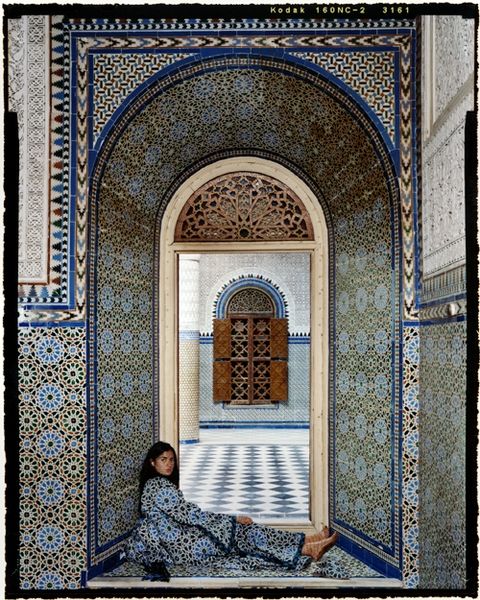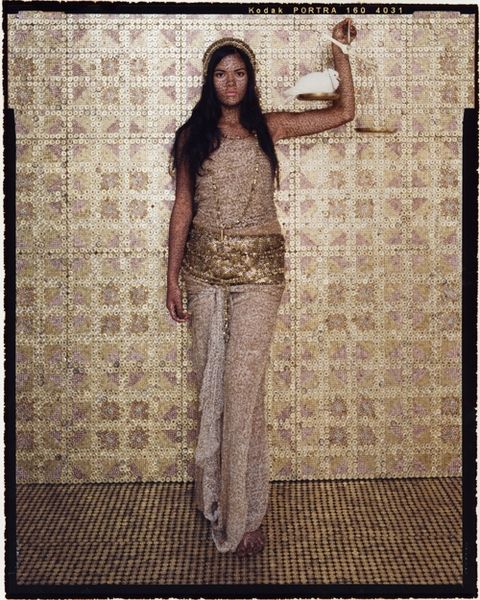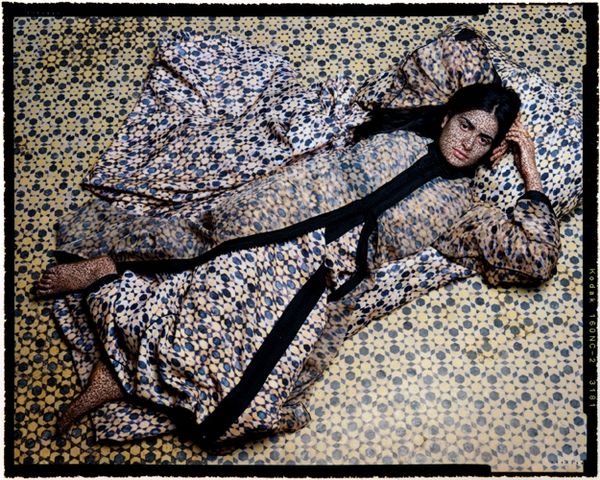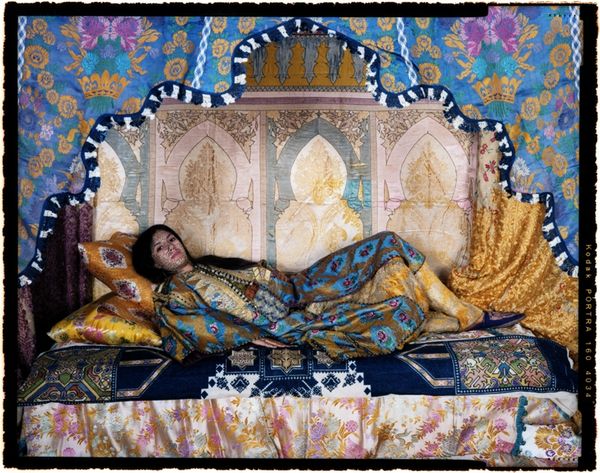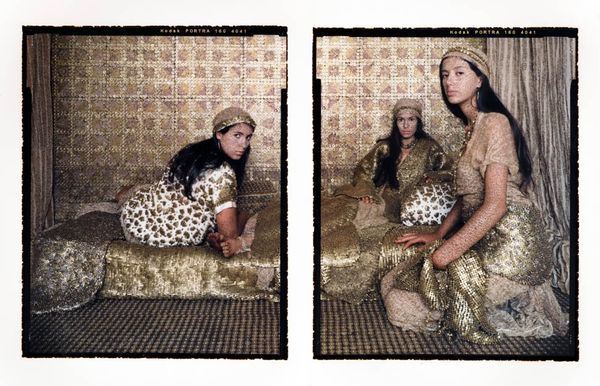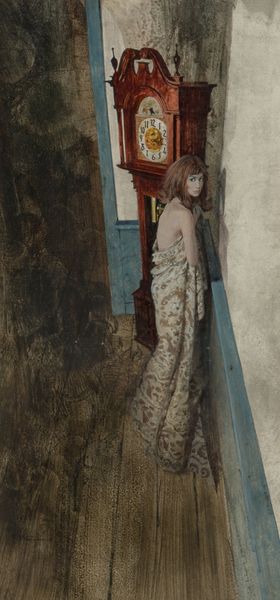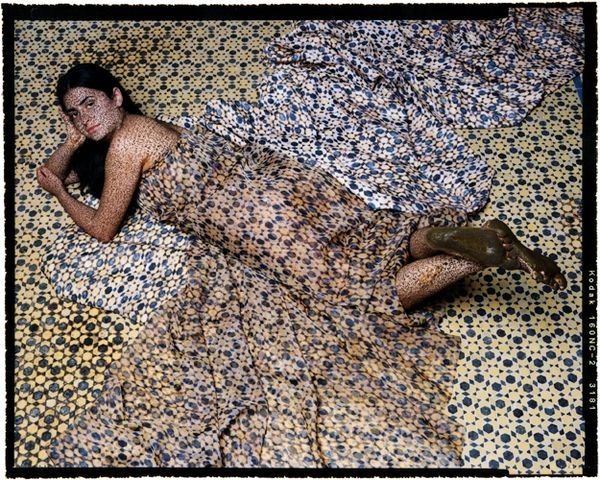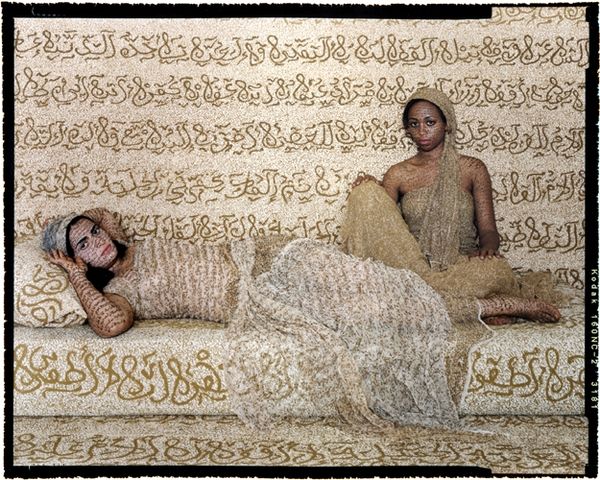
photography, site-specific
#
portrait
#
photography
#
site-specific
#
islamic-art
Copyright: Lalla Essaydi,Fair Use
Editor: We're looking at "Harem #4b", a 2009 photograph by Lalla Essaydi. The image captures a woman standing in an intricately decorated doorway. The patterns are hypnotic. How would you interpret this work in its historical context? Curator: Considering Essaydi's work through a historical lens means engaging with Orientalism and its legacies. Think about the "harem" – a space often exoticized and fantasized about by Western artists. How does Essaydi, a Moroccan artist, reclaim this space and narrative? Editor: That's interesting. I initially saw beauty, but now I see a more complex commentary on representation and cultural appropriation. Does the site-specific nature of the work add another layer? Curator: Absolutely. By staging the photograph in a real, historical setting – a space perhaps reminiscent of traditional Moroccan interiors – Essaydi directly intervenes in the visual history of such spaces. She's not just photographing; she's actively constructing a dialogue with and against that history. Do you notice anything about the patterns in the photo, on her dress, the walls, the doors? Editor: The patterns are everywhere, almost overwhelming. It feels like they both adorn and confine the figure. Is there a connection to be made there? Curator: Precisely. The repetition of these patterns, which are actually henna, traditionally associated with female beauty rituals, speaks to the complexities of identity, confinement, and perhaps even resistance within cultural and societal expectations. Consider who gets to represent whom and the politics inherent in that representation. Editor: That really shifts my perspective. It’s not just a beautiful image; it’s a powerful statement about the gaze and reclaiming agency. Curator: Exactly. And thinking about how museums display and contextualize such work is also crucial. Are they reinforcing old stereotypes or facilitating genuine cross-cultural understanding? Editor: That makes me see how vital historical analysis is for truly understanding a work of art, and even how the location of art impacts its interpretation. Thank you!
Comments
No comments
Be the first to comment and join the conversation on the ultimate creative platform.
